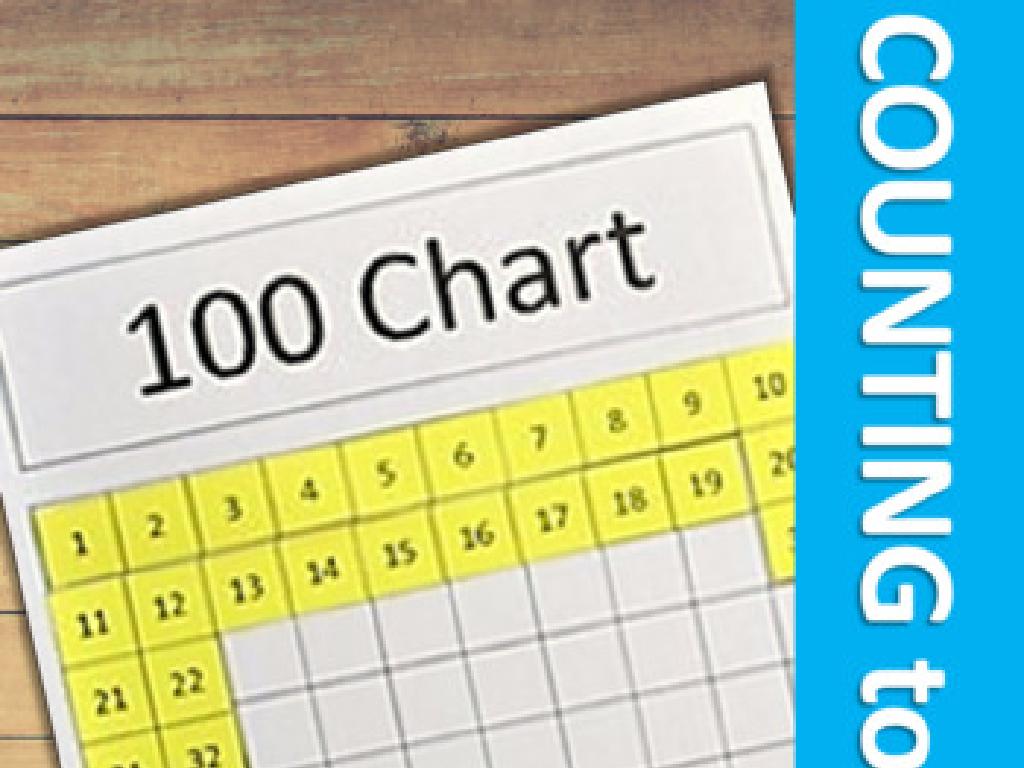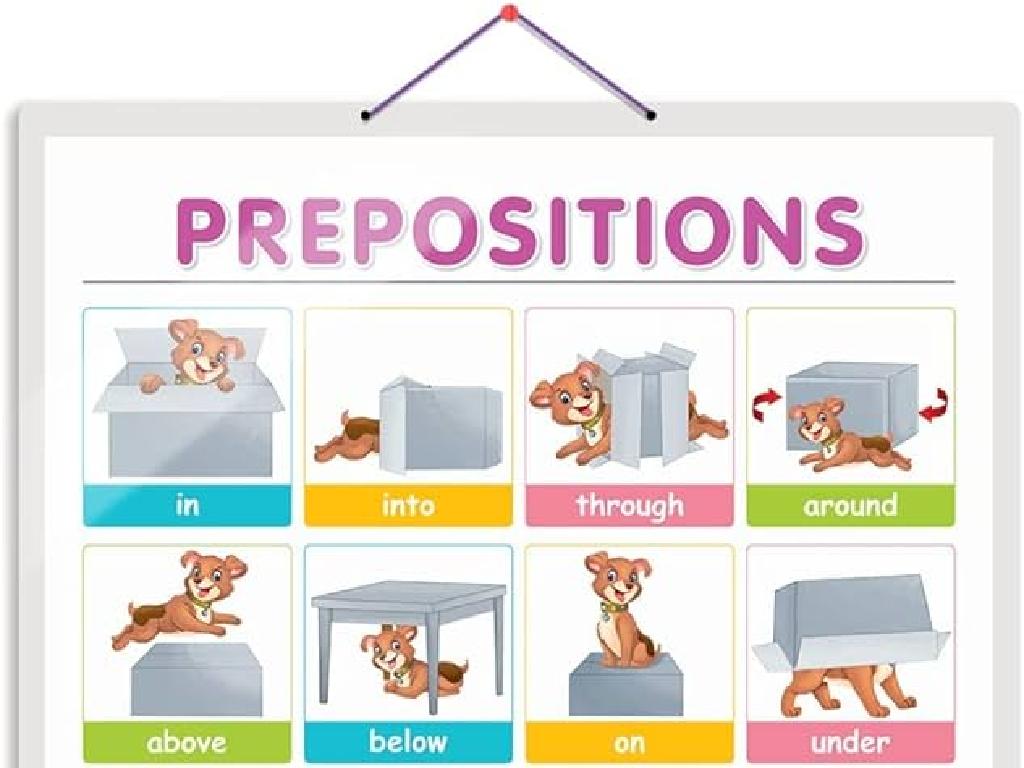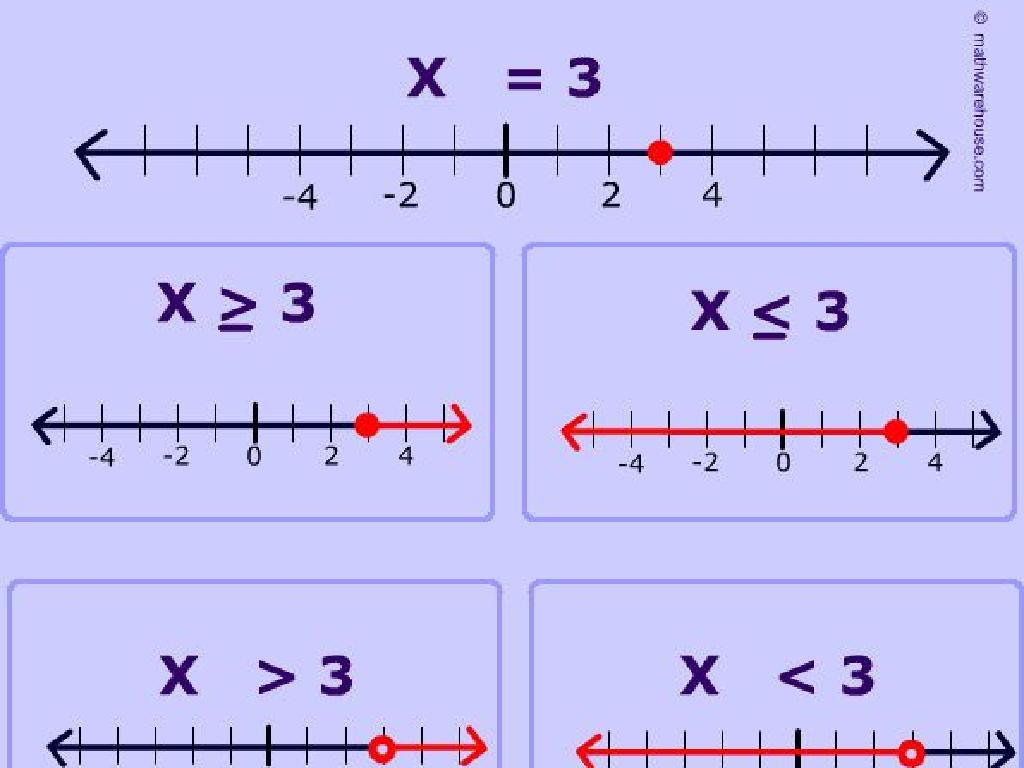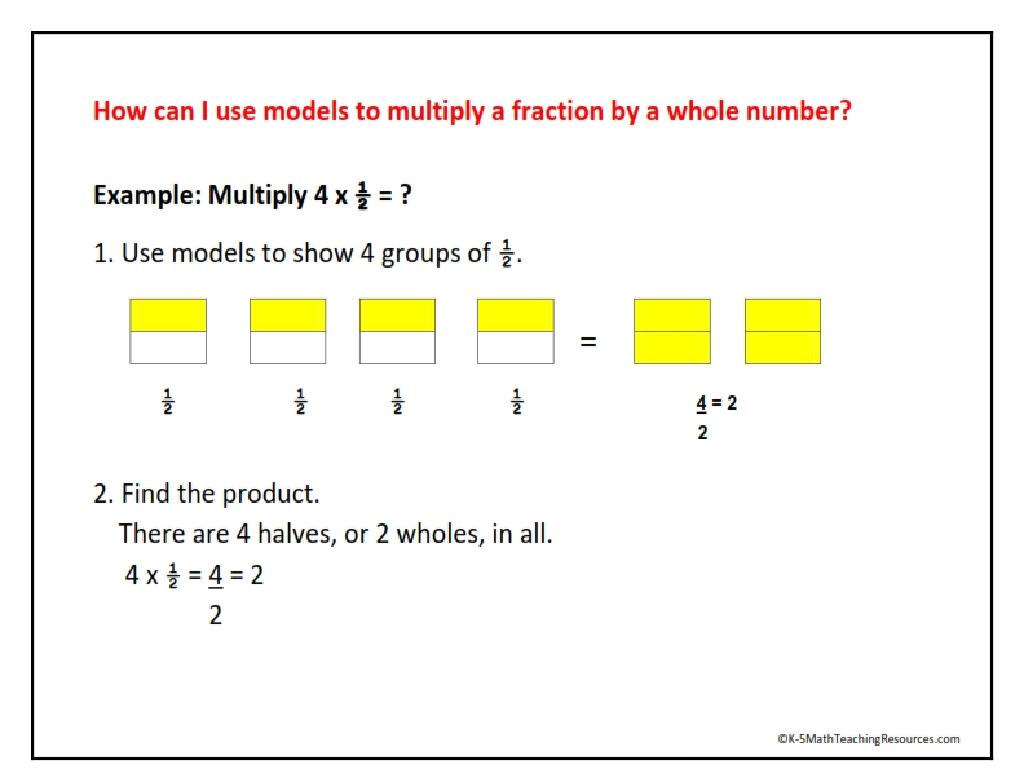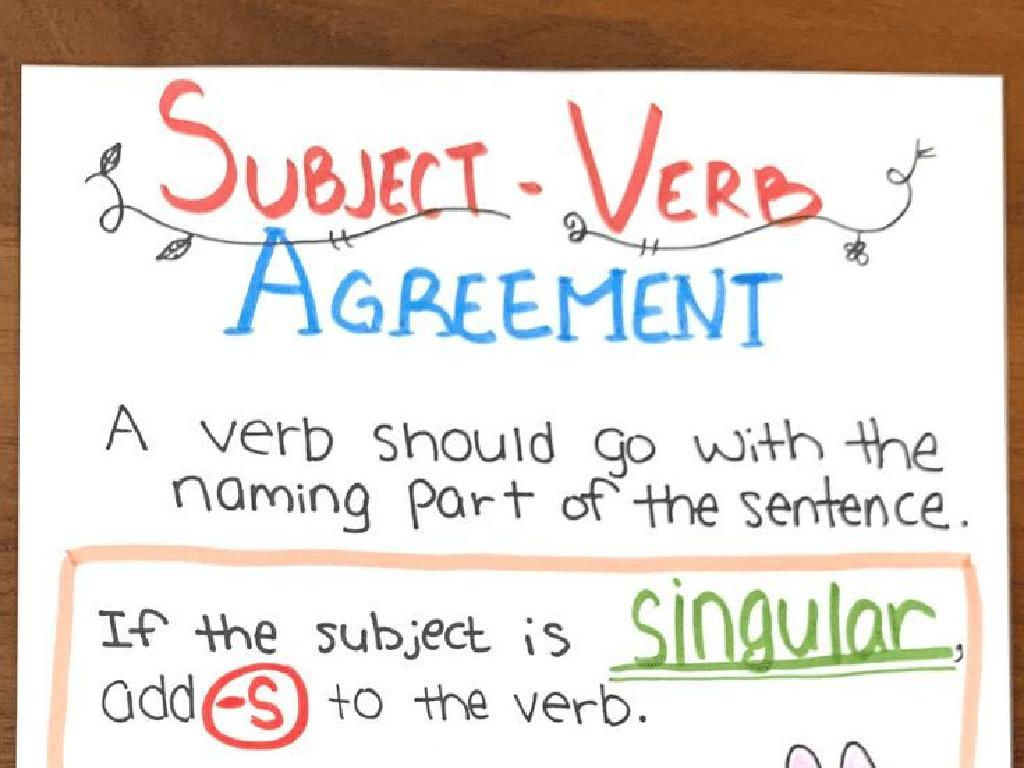Identify Equivalent Linear Expressions I
Subject: Math
Grade: Seventh grade
Topic: Equivalent Expressions
Please LOG IN to download the presentation. Access is available to registered users only.
View More Content
Identifying Equivalent Linear Expressions
– Explore the algebra world
– Focus: Equivalent Linear Expressions
– Learn to identify expressions that represent the same value
– Recognize same expressions
– Different forms but same value, e.g., 2(x + 3) and 2x + 6
– Objective: Understand equivalence
– Grasp that different-looking expressions can be simplified to show they are identical
|
This slide introduces students to the concept of equivalent linear expressions within algebra. The objective is to help students understand that expressions can be manipulated and rewritten in various forms while still maintaining the same value. For example, 2(x + 3) can be expanded to 2x + 6, demonstrating equivalence. Emphasize the importance of recognizing the properties of equality and operations that allow us to transform expressions. Encourage students to practice with different expressions to become comfortable with the concept of equivalence. Provide examples and exercises where students can apply the distributive property, combine like terms, and simplify expressions to discover equivalence.
Understanding Equivalent Expressions
– Define equivalent expressions
– Expressions that yield the same value when simplified
– Examples of equivalent expressions
– For instance, 2(3 + x) and 6 + 2x are equivalent
– The role in algebra
– They allow us to solve equations and understand relationships
– Simplifying expressions practice
|
This slide introduces the concept of equivalent expressions, which are fundamental in algebra. Start by defining equivalent expressions as those that simplify to the same value, regardless of the variable’s value. Provide clear examples, such as 2(3 + x) and 6 + 2x, and explain that they are equivalent because they simplify to the same expression when the distributive property is applied. Discuss the importance of understanding equivalent expressions in algebra, as they help in solving equations and understanding variable relationships. Conclude with an activity where students simplify various expressions to find equivalent pairs, reinforcing their learning through practice.
Properties of Equality: Understanding Equivalence
– Commutative Property of Addition
– Order doesn’t affect sum: 3 + 5 = 5 + 3
– Associative Property of Addition
– Grouping doesn’t affect sum: (2 + 3) + 4 = 2 + (3 + 4)
– Distributive Property
– Multiply through parentheses: 2(3 + 4) = 2*3 + 2*4
– Applying Properties to Find Equivalents
|
This slide introduces the foundational properties of equality that are essential for understanding equivalent linear expressions. The commutative property indicates that the order in which two numbers are added does not change the sum. The associative property shows that when adding three or more numbers, the way in which the numbers are grouped does not affect the sum. The distributive property allows us to multiply a single term by terms inside parentheses. Emphasize that these properties are tools for identifying equivalent expressions. Provide examples and encourage students to apply these properties to simplify expressions and identify equivalent ones. For instance, show how the distributive property is used to expand expressions like 3(x + 4) into 3x + 12.
Identifying Equivalent Expressions
– Using properties to find equivalence
– Apply distributive/commutative properties
– Simplifying expressions for equivalence
– Combine like terms to simplify expressions
– Practice with guided solutions
– Step-by-step problem-solving approach
– Understanding equivalence in expressions
|
This slide introduces students to the concept of equivalent expressions in algebra. Start by explaining how properties like the distributive and commutative properties can be used to identify equivalent expressions. Show how simplifying expressions by combining like terms can reveal common values, making it easier to see the equivalence. Provide practice problems and guide students through the solutions, ensuring they understand each step. Emphasize the importance of recognizing different forms of the same expression and how this skill is crucial for solving algebraic equations. Encourage students to ask questions and work through additional problems for a deeper understanding.
Let’s Practice Together: Equivalent Linear Expressions
– Interactive example: 3(x + 4) vs. 3x + 12
– Simplify 3(x + 4) to see if it equals 3x + 12
– Group activity: Match equivalent expressions
– Work in groups to find pairs that are the same
– Share findings with the class
– Each group will present their matched pairs
– Discuss the concept of equivalence
– Understand why different expressions can have the same value
|
This slide is designed for an interactive class activity to help students understand equivalent linear expressions. Begin with a guided example, simplifying 3(x + 4) to show it is equivalent to 3x + 12. Then, students will work in small groups to find and match pairs of equivalent expressions from a provided list. After the activity, each group will share their findings with the class, fostering a collaborative learning environment. Conclude with a discussion on how different expressions can represent the same value, reinforcing the concept of equivalence. Provide guidance on simplifying expressions and encourage students to explain their reasoning during the sharing session. Possible activities for different groups could include matching expressions with different variables, expressions with multiple terms, and expressions involving fractions or decimals.
Real-World Applications of Equivalent Expressions
– Importance of equivalent expressions
– They simplify complex problems and reveal relationships.
– Budgeting with equivalent expressions
– Plan finances by equating income and expenses.
– Shopping smart: Using algebra
– Compare deals and discounts to make informed choices.
– Solving everyday problems
– Apply algebra to calculate distances, times, or costs.
|
Understanding equivalent expressions is crucial for students as it allows them to simplify complex algebraic problems and see the connections between different mathematical concepts. In real life, this skill is invaluable for effective budgeting, where one needs to balance income and expenses, often represented by equivalent expressions. When shopping, students can use algebra to compare deals, discounts, and bulk purchase options to make the most economical choices. Moreover, algebraic knowledge enables them to solve a variety of everyday problems, such as calculating travel distances, optimal speeds for fuel efficiency, or the cost of materials for a project. Encourage students to bring in examples of how they’ve used equivalent expressions in their daily lives or how they might use them in future scenarios.
Class Activity: Expression Scavenger Hunt
– Find sets of equivalent expressions
– Work in teams to solve expressions
– Match expressions around the classroom
– Present findings and reasoning
|
This interactive class activity is designed to reinforce the concept of equivalent linear expressions. Divide the class into small teams and provide each team with a set of expressions to solve. Scatter different equivalent expressions around the classroom for teams to find and match with their solved expressions. Once all matches are found, each team will present their equivalent expressions and explain the mathematical reasoning behind their equivalence. This activity encourages collaboration, problem-solving, and a deeper understanding of how different expressions can represent the same value. Possible variations of the activity could include a timed challenge, incorporating expressions with different variables, or having students create their own sets of equivalent expressions for others to solve.
Wrapping Up: Equivalent Expressions
– Review of equivalent expressions
– Homework: Practice worksheet
– Complete the worksheet to reinforce today’s lesson
– Upcoming: Simplifying expressions
– Get ready to dive deeper into complex expressions next class
– Keep practicing for mastery
|
As we conclude today’s lesson on equivalent linear expressions, it’s important to summarize the key points to reinforce student understanding. For homework, students are assigned a worksheet that will provide additional practice in identifying equivalent expressions, ensuring they grasp the concept. Looking ahead, the next class will focus on simplifying more complex expressions, building on the foundation laid today. Encourage students to keep practicing, as mastery of this topic is crucial for their success in algebra. The homework will also serve as a good indicator of their understanding and will help identify any areas that may need further clarification in the next session.

